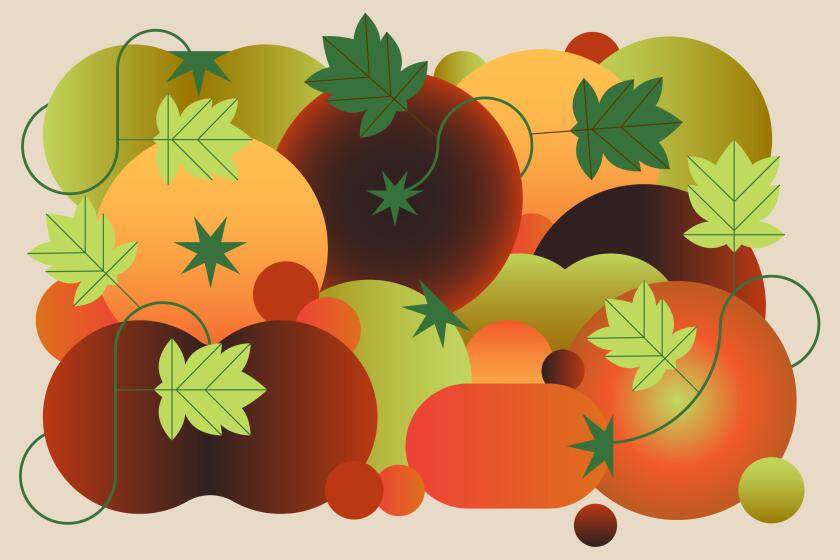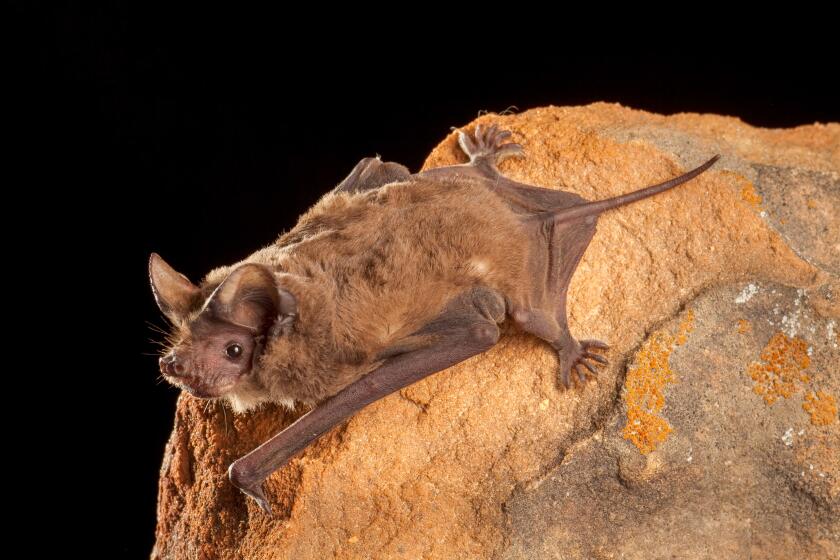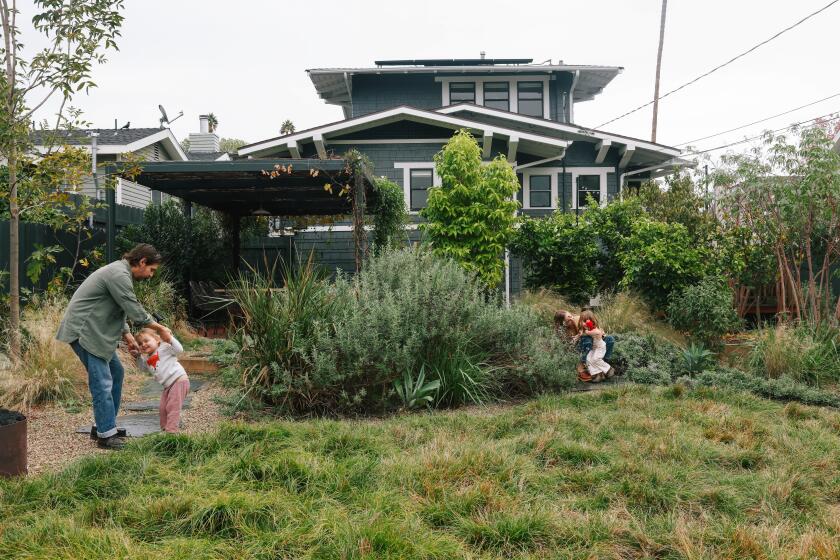What’s the fastest way to kill your lawn? Science says forget the cardboard

- Share via
Somehow, astonishingly, it’s November. My Jack-o’-lanterns are shriveling, the holidays are speeding toward us and this month’s edition of the L.A. Times Plants newsletter is jam-packed with garden and plant-related events.
You’re reading the L.A. Times Plants newsletter
Jeanette Marantos gives you a roundup of upcoming plant-related activities and events in Southern California, along with our latest plant stories.
You may occasionally receive promotional content from the Los Angeles Times.
But first, an update on my ongoing quest to find the cheapest, easiest and most effective way to smother weeds and unwanted lawns to create drought-tolerant landscapes and better soil.
Arborist Linda Chalker-Scott, horticulture professor and advisor for Washington State University’s Puyallup Research and Extension Center, says the best method is not only the easiest, it’s also supported by scientific research: Mow the lawn and/or weeds as low as possible — “Basically scalp it,” she said. Cover the turf and/or weeds with at least 8 to 12 inches of freshly cut wood chips, then wait a month or two for the grass and/or weeds to die.
There’s no need to remove the sod or spread a layer of newspaper or cardboard first, says Chalker-Scott, who explains it all in The Garden Professors, a science-based blog she helped create.
“Weeds (and lawn) won’t grow without light,” she said.
After six weeks or so, pull back the chips. If any grass is still green, wait until it’s brown and decomposing, she said. Then you can dig into the soil, add new plants and return the mulch to help build better soil.
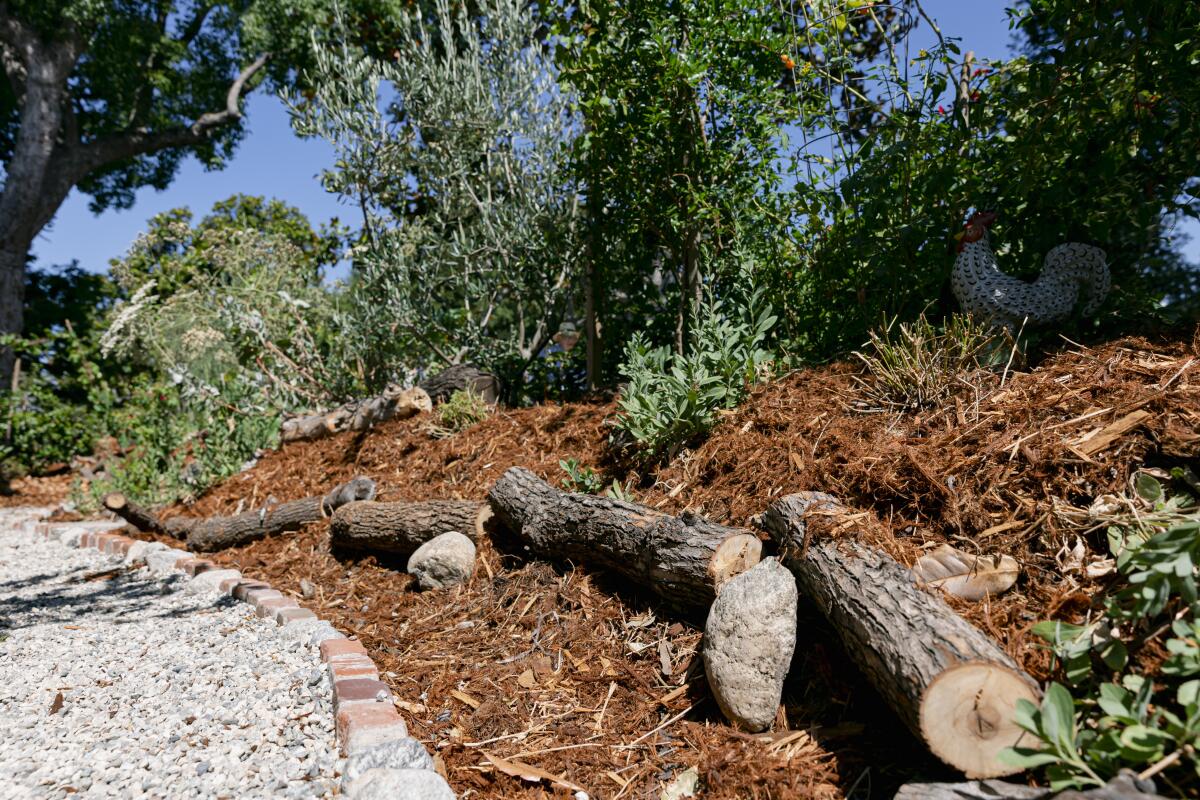
She bases her technique on a study published in 2005, where she and others tried two ways to eliminate a patch of weedy blackberry bushes to make way for for native plants. They mowed the field and sprayed half of it with the herbicide glyphosate (the active ingredient in Roundup). The other half was covered with a foot of wood chips. They let the area sit all fall and winter, planted native plants in both sections and sat back and watched.
“On the glyphosate side, all the weeds came roaring back and all the native plants died,” she said. “On the wood chip side, we had 100% survival of the native plants. In fact, it was better than 100% because the snowberries did so well they started spreading, which was a turning point for me. Wood chips are so easy and natural that we [she and her arborist colleagues] are all fanatics about their benefits. I even have one colleague who says, ‘If something’s wrong in your landscape, the answer is wood chip mulch.’”
Should we pick our homegrown tomatoes when they’re green? Three experts weigh in with harvesting tips, plus plant-related activities for September 2023.
What about the purported benefits of lasagna mulching, where you cover the ground with flattened, well-moistened cardboard or newspaper before adding chips and other amendments? This topic exasperates Chalker-Scott, who has written several garden myth-busting books.
“There is no peer-reviewed research on the benefits of cardboard mulch,” she said, and the little research that exists indicates that using cardboard mulch does more harm than good.
“I’m all for following nature in how we manage our gardens and landscapes,” she wrote in April. “But deep sheet mulching isn’t natural. It’s bat-sheet crazy.”
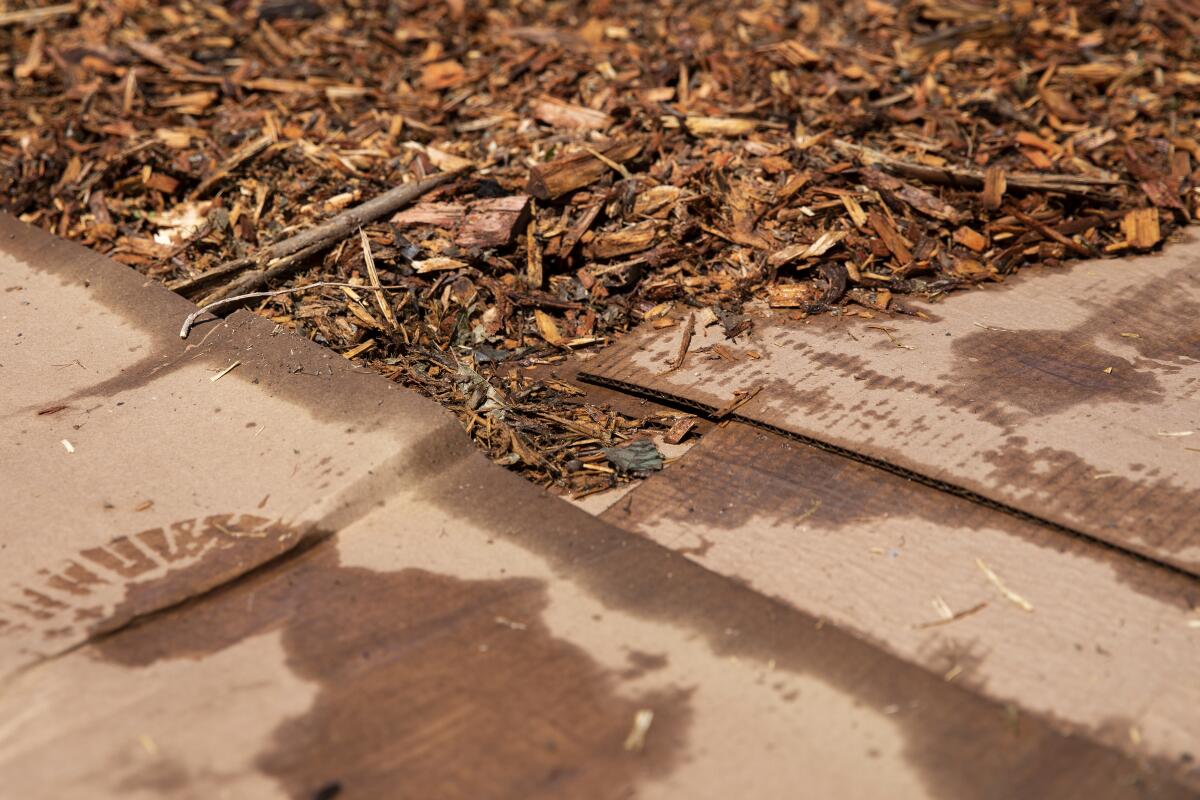
Chalker-Scott was part of the only scientific study using cardboard as mulch that she has seen. The 2019 study examined how carbon dioxide and oxygen moved through various mulches in and out of the ground. A 4-inch layer of wood chips had the best airflow of any mulch. A single layer of cardboard with nothing on top was 10 times worse and landscape fabric was 100 times worse, she said.
“People don’t think about oxygen being a critical component in the soil,” she said. “They want to smother the weeds, but what they’re doing is smothering the ecosystem and the living things in the soil — the moles and earthworms and microbes will suffer and possibly die.”
Anecdotal reports of earthworms and fungi teeming under the cardboard could well be those creatures trying to get oxygen, says Chalker-Scott.
A study published in May looked at environmental contaminants in bedding materials for chickens, which included shredded cardboard. That study found that cardboard has some of the highest levels of hazardous contaminants, including so-called forever chemicals that are harmful to animals (including humans) and the overall environment. So why, she says, would you add it to your garden soil?
Plant pathologist James Downer of Ventura, another Garden Professor blogger, agrees that wood chips without cardboard are the best approach to rebuilding soil and squelching unwanted grasses and weeds.
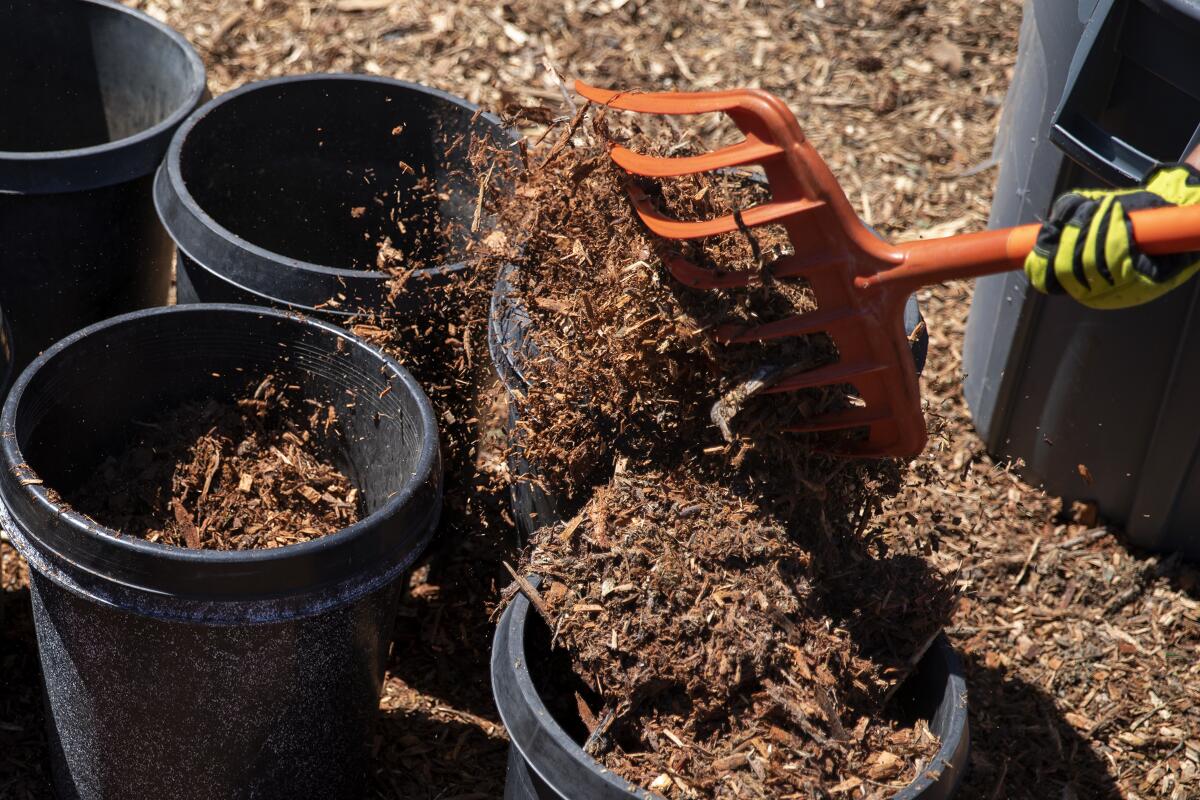
But Downer, a retired horticulture advisor for Ventura County’s UC Cooperative Extension office and plant science instructor at Cal Poly Pomona, warns that Southern California has more warm-season grasses, like Bermuda grass, which are harder to kill.
He recommends covering the lawn with 8 to 12 inches of wood chips and then being vigilant about yanking any rhizomes that pop through or using spot application of the grass herbicide Fluazifop-P-butyl, such as Fusilade II, to kill intruders. (Note: The Environmental Protection Agency says Fluazifop-P-butyl is toxic to fish and other aquatic creatures, and can be harmful to humans if inhaled or absorbed through the skin.)
Getting chips is relatively easy, Downer said. Talk to a local tree trimming company to request a delivery of arborist (fresh) wood chips, or sign up with Chip Drop, which connects arborists looking to dump chips with people who want them. The chips are free, although you might get faster service if you pay a small fee. Be warned, however, that the drops can be huge, enough to bury a driveway, and may be delivered without warning.
Bats are our friends. They were here when saber-toothed tigers roamed L.A., and they eat the bugs that drive us crazy, so they need habitat protection too.
A sheet mulching defender
Now, I’ve written a lot about sheet mulching and the reports have been glowing. One of the strongest local advocates is Altadena landscape designer Leigh Adams of Studio Petrichor. She transformed an acre of old lawn at the L.A. County Arboretum into the Crescent Farm demonstration garden using sheet mulching and hugelkultur mounds to kill the old lawn, rebuild the soil and help collect and store water.

Adams has long maintained that the cardboard used for shipping containers, such as Amazon boxes, is crucial to creating good soil because it’s attractive to beneficial mycorrhizal fungi. “The cardboard is just prechewed cellulose and the glue is like candy to the fungi. It’s like, if you offer children sugary breakfast cereal or steel-cut oats, you know what they will choose. And the pockets in the cardboard give them a perfect place to replicate.”
It’s important to use the right kind of cardboard, Adams said. No shiny surfaces or heavy inks, and stay away from flat sheets of agricultural cardboard because those lack the glue of corrugated cardboard and seem to curl rather than decompose.
Adams will flatten shipping cardboard boxes and remove staples and tape before wetting and pressing them into the ground and covering them with those miraculous wood chips.
She’s used this technique at multiple landscaping sites, including a landscaping project in La Cañada Flintridge, designed by her partner, Shawn Maestretti, that won an honorable mention in Pacific Horticulture’s 2023 Design Futurist Award.
Adams doesn’t have any science degrees. She’s a lifelong teacher and artist who learned permaculture techniques and landscape design to help the environment. She’s excited about research that indicates different fungal strains can resist radiation, degrade glyphosate or potentially break down PFAs, or forever chemicals, in the environment.
She may not have hard scientific data, Adams acknowledges, but experience tells her that cardboard mulching is more efficacious than just using wood chips. She thinks our looming environmental crises mean we have to move fast.
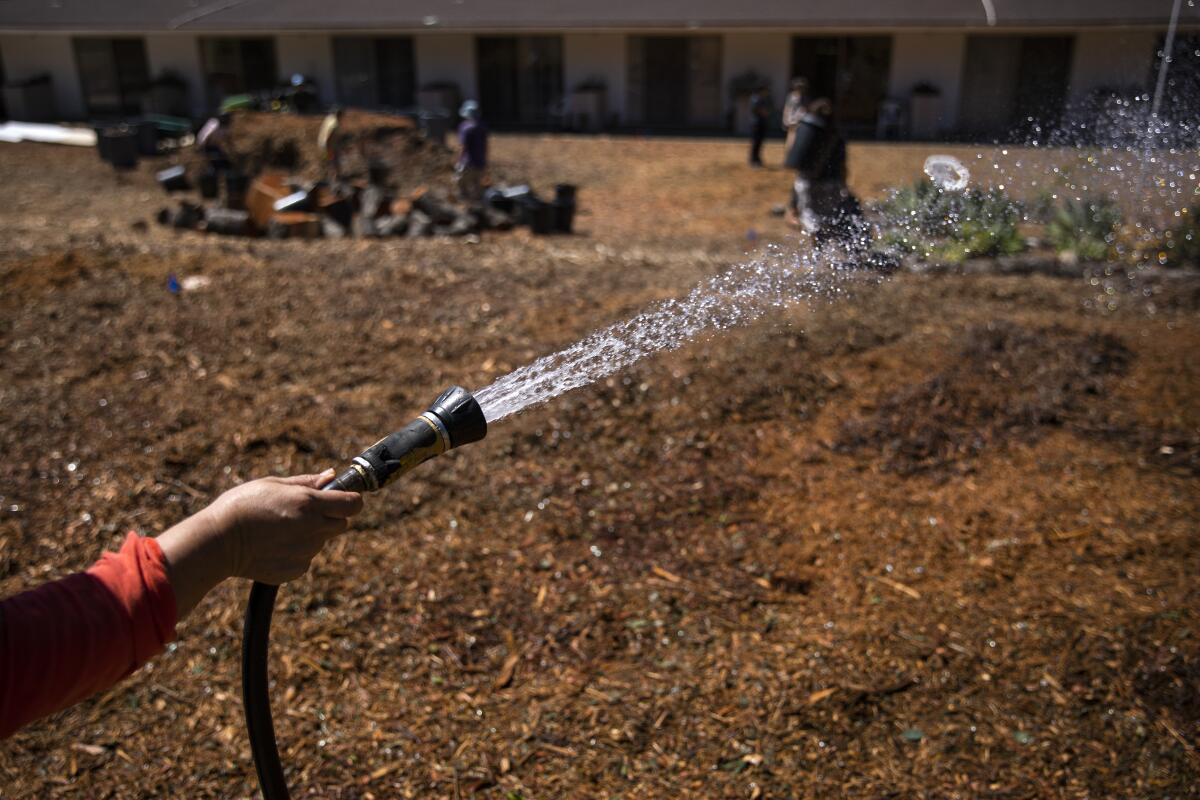
“I trust science,” says Adams, “but I just don’t think we have time to follow those [study] grid patterns. We’d better use a shotgun approach to see what works before we run out of time.”
Chalker-Scott is impatient with this debate. Her myth-busting blogs bring in plenty of hate mail, she says, but she feels duty-bound to challenge ideologies that lack scientific evidence. “This is not a question of differing opinions,” she wrote in a text. “One is fact-based and borne out with research and the other is a dogmatic belief in spite of published research to the contrary.”
Who knew cardboard could be so controversial? I have tried lasagna mulching and found that it helped loosen up some very compacted soil. But just spreading a thick layer of wood chips sounds so much easier than finding and flattening enough cardboard (because there never seems to be enough) that I’m eager to try this approach to smother my garden’s tenacious weeds.
Bottom line: Peruse the Garden Professors blog and studies, roam the Crescent Farm’s lively habitat at the Arboretum, if only for inspiration’s sake, and realize that no matter what option you choose, you’re going to need a good way to move all those wood chips. I recommend cranking up some tunes, calling family and friends, and offering them LOTS of pizza and beverages to help transform your yard.
Today’s lesson in L.A.’s changing landscapes is a modern-day parable about the joys and challenges of creating native habitats on public lands.
Experience California native plants anywhere
L.A. based P.F. Candle Co., the handmade fragrance goods company, is releasing three new California-scented candles today, after getting suggestions from L.A. Times Plants staff. The company chose three bewitching aromas for its limited-edition native plant collection: Jeffrey Pine, with notes of ponderosa, vanilla, juniper and “campfire”; California Black Walnut, with added hints of lime, green moss, black amber and walnut husk; and Cowboy Cologne, California sagebrush spiked with blue sage, vetiver (a fragrant grass), cypress and rosemary. The candles can be purchased separately for $24 or as a three-pack in the company’s trademark amber glass jars (which can be recycled at its flagship store in Echo Park).
Sign up for our L.A. Times Plants newsletter
Get a monthly roundup of upcoming plant-related activities and events in Southern California, along with links to tips and articles you may have missed.
You may occasionally receive promotional content from the Los Angeles Times.
Upcoming events
There’s no way any plant lover can be bored this month — check out the activities on Nov. 4 alone! Please note that the South Bay Parkland Conservancy and Palos Verdes Peninsula Land Conservancy have multiple habitat restoration project workdays this month looking for volunteers.
If you have an upcoming event you’d like to include in December’s calendar, email the information to jeanette.marantos@latimes.com by the third week of November, and we’ll try to include it. Feel free to share this email with friends, and encourage them to subscribe.
Consider subscribing to the Los Angeles Times
Your support helps us deliver the news that matters most. Become a subscriber.
Nov. 3-5
The Huntington Library, Art Gallery and Botanical Gardens 2023 Fall Plant Sale, 10 a.m. to 5 p.m. at the garden nursery in San Marino. Reservations are required but the sale is free with paid $29 admission ($24 seniors 65+, military and students with ID, $13 ages 4-11. Members and children under 4 enter free. College students with ID get free entry for a year with $36 College Card.) huntington.org
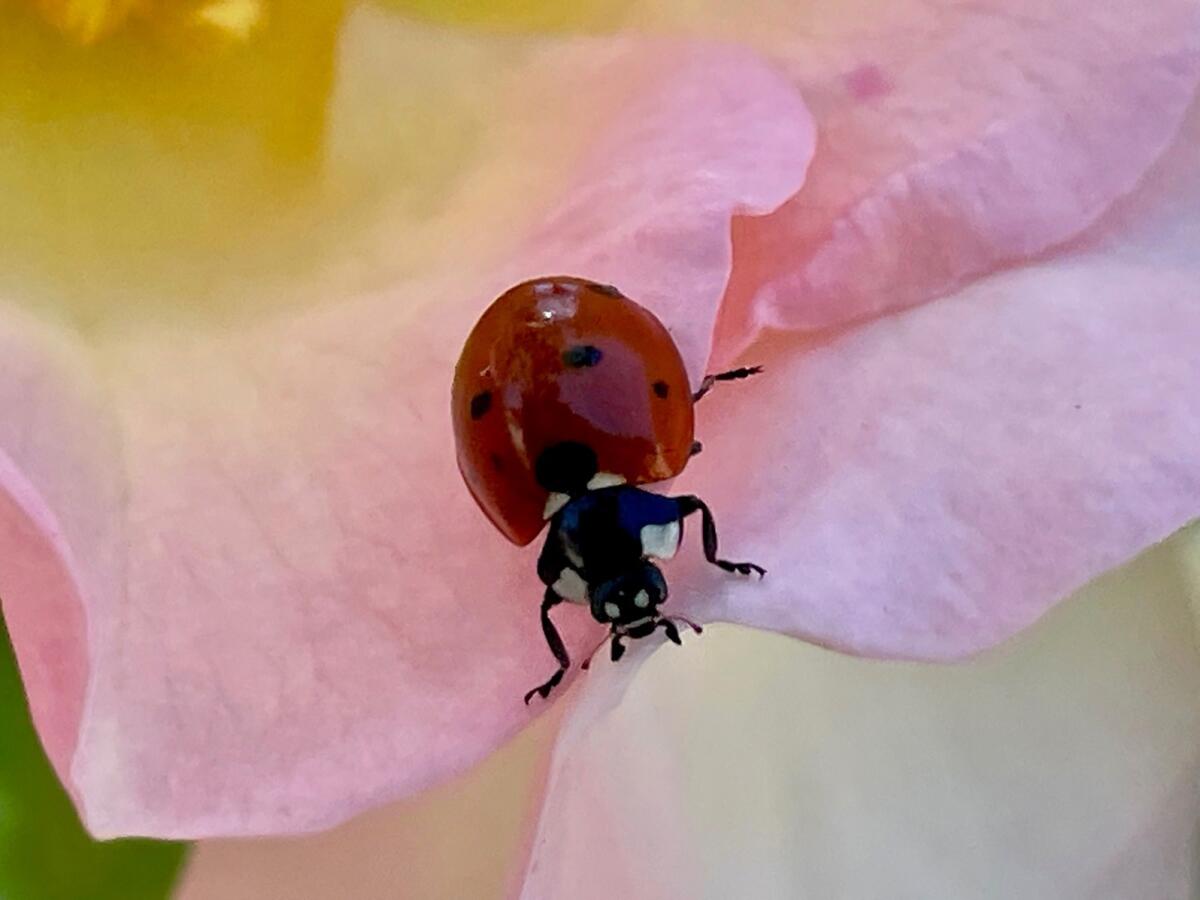
Nov. 3
The Thoughtful Gardener, a free presentation about garden planning by the UC Cooperative Extension Master Gardeners of Orange County, 5 to 6 p.m. at the Anaheim Public Library community room. No registration is required. mgorange.ucanr.edu
Nov. 4, 18
Citrus Tree Pruning 101 hands-on workshops by Fruitstitute and the Los Angeles Parks Foundation, 10:30 a.m. to 1:30 p.m. at the Franklin Canyon Orange Grove in Beverly Hills, one of L.A.’s original citrus orchards. Only 15 people per workshop; advance registration is required. Tickets are $50. fruitstitute.com
Nov. 4
Los Angeles Pierce College’s Horticulture Day & Plant Sale, 10 a.m. to 3 p.m. at the college Arboretum in Woodland Hills. The day includes information about mulching and composting, nurseries and growers selling plants and supplies, a petting zoo and more. Admission is free. eventbrite.com
Students for Eco-Education and Agriculture (SEEAG) 11th Ventura County Farm Day, 10 a.m. to 3 p.m., includes self-guided tours of more than 15 farms and other agricultural venues in Ventura County, with hands-on activities for children and demonstrations. Admission is free but advance registration is requested. venturacountyfarmday.com
Western Monarch Count Training for volunteers who want to help count monarch butterflies during the Xerces Society’s annual Thanksgiving and New Year counts, 7 to 8:30 a.m. at the Rustic Canyon Recreation Center in Santa Monica. The training is free but advance registration is required. eventbrite.com
Western monarch populations have rebounded since their calamitous drop in 2020 but are still far below historic norms. Are native milkweed giveaways helping?
Gardening talks by horticulturalist Nick Federoff, host of “Things Green” on PBS, 11 a.m. to 2 p.m. at the Pomona Fall Home Show in the Pomona Fairplex. Admission is free to the show and the talk. homeshowconsultants.com
Native Plant Sale by the San Gabriel Mountains Chapter of the California Native Plant Society, 9 a.m. to 2 p.m. at the Monrovia Historical Museum. cnps-sgm.org
Monarch Nature Trail Volunteer Day, 9 to 11 a.m. in Huntington Beach, includes volunteer tasks for all ages in restoring habitat for monarch butterflies. Participants should wear tennis shoes, use sun protection (hat and/or sunscreen) and bring drinking water. There are no restrooms available on-site. mgorange.ucanr.edu
LA County Public Works Gardening 101, a free workshop from 10 to 11:30 a.m. at the Alhambra Civic Center Library. Compost bins will be available for purchase for $40 or $65 for a worm compost bin (including worms). No reservations are needed. eventbrite.com
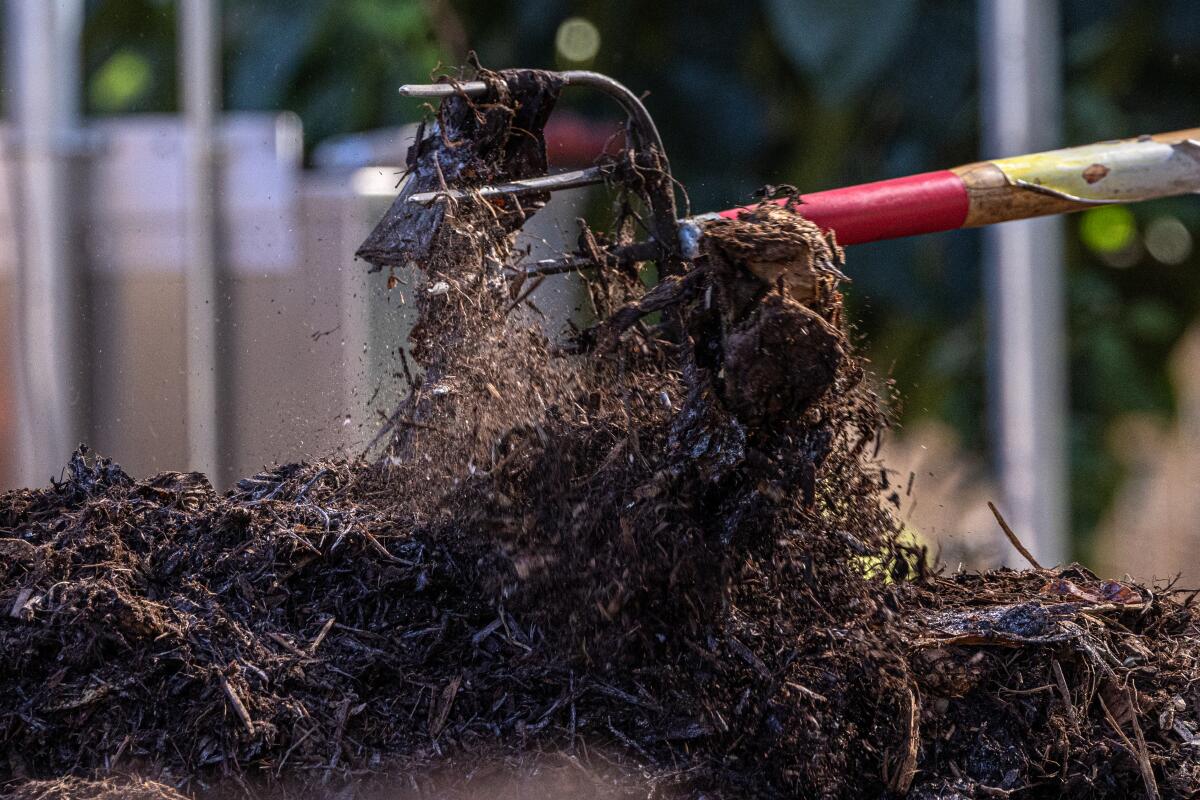
L.A. Sanitation & Environment Home Composting Workshop, 9 to 11 a.m. at Hollenbeck Park in Boyle Heights. The workshop inlcudes free mulch and compost; free rain barrels to the first 75 residents of the City of Los Angeles who register for the workshop; and compost and worm bins for sale for $20. eventbrite.com
Notre Dame Academy’s Free Gardening Class for children 8-11, from 9 to 11 a.m. at the school in West L.A.’s Rancho Park, provides hands-on activities for children in third through fifth grade in gardening and environmental awareness. eventbrite.com
Long Beach Plant Fest, 12 to 5 p.m. at the Museum of Latin American Art (MOLAA) in Long Beach is sponsored by Plantitas and Hella Plants Market. Preregistration may be required for some workshops. Tickets are $15 or $35 for special VIP access that allows entry at 11 a.m. eventbrite.com
Here are the best retail native plant nurseries in Southern California to help you create a habitat for birds and pollinators in your yard or even on a patio.
Nov. 5, 12
Native Plant Seed & Propagation Classes, free weekly classes from 3:30 to 5 p.m. at Artemisia Nursery in El Sereno, taught by longtime “native plant nerd” and propagator Antonio Sanchez, manager of the Santa Monica Mountains Fund nursery. eventbrite.com
Nov. 5
Help plant a micro forest on the hillsides of Ascot Hills Park, 9 a.m. to noon in El Sereno. Participants should bring refillable water bottles, hat and sunscreen. northeasttrees.org
Learn to grow ranunculus with Joan Stevens of Mama Botanica home-based flower farm, 11 a.m. to noon at Fig Earth Supply Nursery in Mt. Washington. Advance registration required; tickets are $10. figearthsupply.com
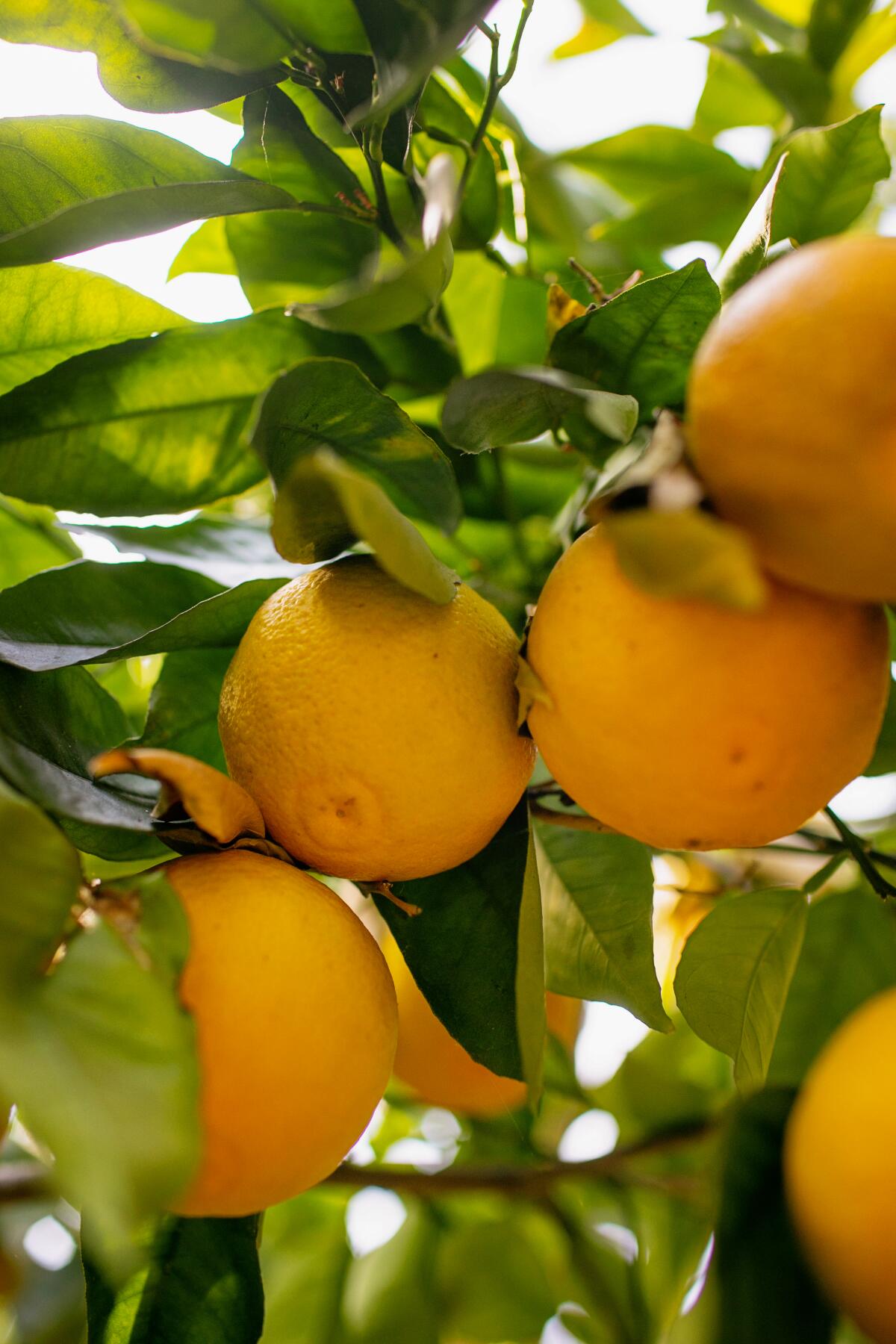
Nov. 6
How to grow and harvest citrus, a free presentation by UC Cooperative Extension Master Gardeners of Orange County, 9 to 10 a.m. at the community center in Huntington Beach. No registration is required. mgorange.ucanr.edu
Instead of a lawn, Jose Ramirez planted 250 trees, including avocados, limes, apples, mangoes and even coffee beans in his Boyle Heights yard.
Nov. 8, 17
Protecting our Local & Global Wonders: a free TreePeople workshop offered on two days from 2 to 4 p.m. at the Animal Tracks Exotic Animal Sanctuary in Agua Dulce. The workshop includes a tour of the sanctuary. Advance registration is required. tree-people.my.salesforce-sites.com
Nov. 10
Container Gardening With Native Plants, a free hands-on workshop taught by Antonio Sanchez, manager of the Santa Monica Mountains Fund Native Plant Nursery, 2:30 to 4 p.m. at the Rancho Sierra Vista Nursery in Newbury Park. Each registered participant will get a free native plant to take home. eventbrite.com
Propagating Native Plants From Cuttings, a hands-on Theodore Payne Foundation workshop taught by horticulture director Tim Becker, 9 a.m. to noon at the foundation in Sun Valley. Advance registration online, $85 ($75 members). eventbrite.com
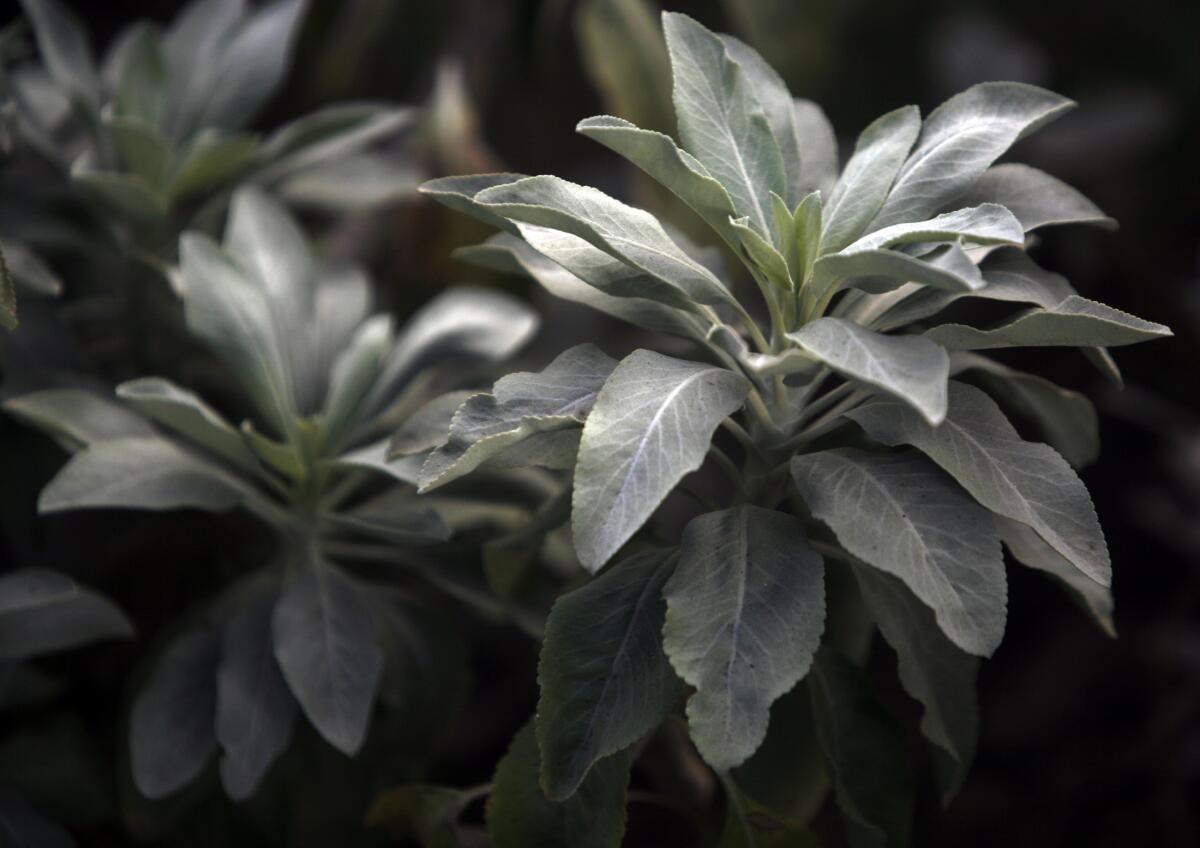
Nov. 11-12
3rd Ojai Herbal Symposium on “Herbs: The People’s Medicine,” 10 classes over two days in Ojai. Ticket prices range from $100 for one day (five classes) watching via Zoom, to $325 to participate in person for the entire weekend if purchased by Nov. 10. ojaiherbal.org
Nov. 11, 25
Palos Verdes Peninsula Land Conservancy native plant sales, 10:30 a.m. to 1 p.m. at George F. Canyon Nature Center on Nov. 11 and White Point Nature Education Center on Nov. 25. pvplc.org
Growing Works Nursery native plant and succulent sales, 10 a.m. to 2 p.m. at the nursery in Camarillo. turningpointfoundation.org
Nov. 11
Veggie Gardening and California Native Plants with Sophie Pennes, founder of Urban Farms L.A.,, 10 a.m. to noon at the Theodore Payne Foundation in Sun Valley. Tickets are $35 ($25 for members). eventbrite.com
Nov. 12
South Coast Cactus & Succulent Society monthly meeting features succulent propagator Steven Frieze of Distinctive Flora discussing his plant-related expedition to Oaxaca, Mexico, at 1 p.m. at South Coast Botanic Garden in Rolling Hills Estates. Admission is free. southcoastcss.org
Kyle and Claire Penn pulled out their lawn in Eagle Rock and never looked back. “We haven’t given up anything by not being able to run around on grass,” Kyle says.
Nov. 18
Association of Professional Landscape Designers of Greater Los Angeles’ 4th Designer Plant Fair, 8:30 a.m. to 2:30 p.m. in Ayres Hall at the Los Angeles County Arboretum in Arcadia . Preregistration is required; the $25 ticket ($15 for members) includes admission to the botanic garden. arboretum.org
Understanding Oaks: A Tree Walk and Talk With arborist Alison Lancaster, 9 to 11 a.m. at the Theodore Payne Foundation in Sun Valley. Tickets are $35 ($25 for members). eventbrite.com
California Native Tree Maintenance: A Tree Walk and Talk With arborist Alison Lancaster, 1 to 3 p.m. at the Theodore Payne Foundation in Sun Valley. Tickets are $35 ($25 for members). eventbrite.com
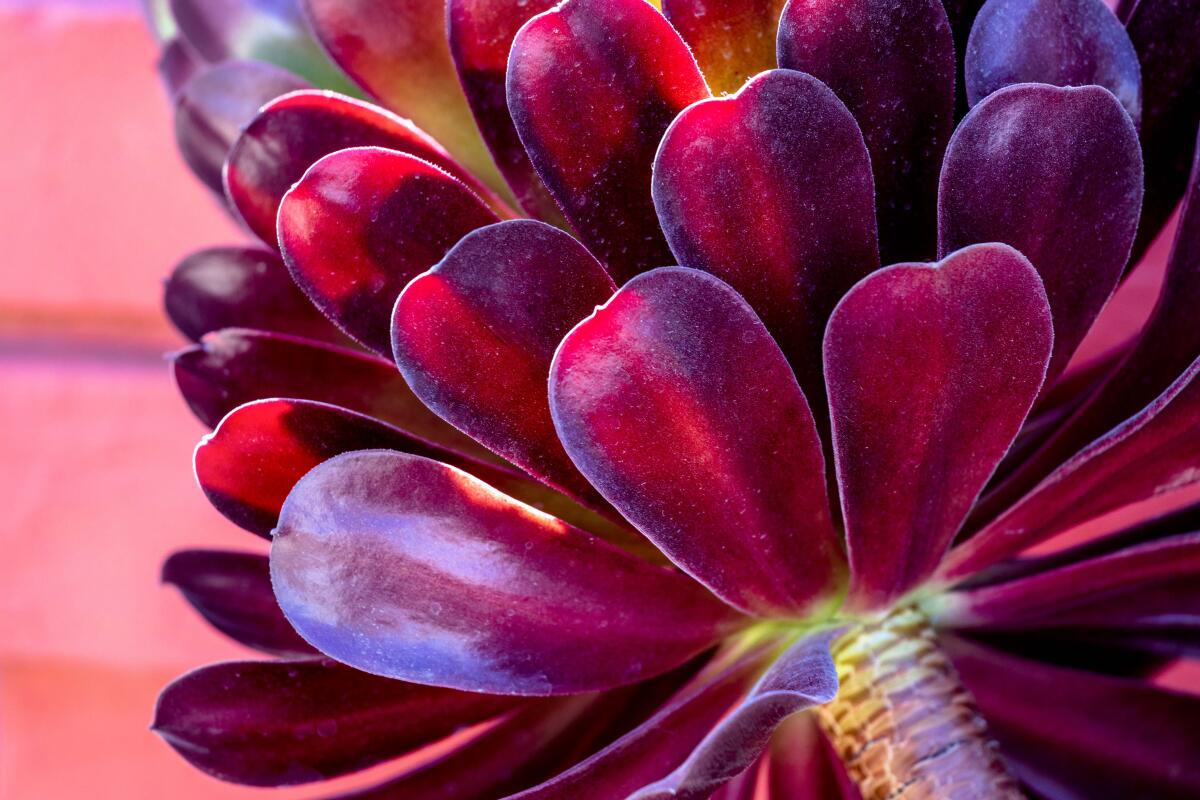
Floral Design Workshop, 1 to 3 p.m. in downtown L.A., a hands-on class taught by Ghanaian multimedia artist Nelson ZêPequéno. Materials, including fresh flowers, will be provided. Participants are asked to bring their own vase. Advance registration required; tickets are $80. usalproject.com
During the pandemic, Rachel Nafis worked as an ER nurse. Burned out, she turned to flower farming and learned that being a florist is about more than just flowers.
Fall in the Farm at the Pomona Fairplex includes hands-on workshops and displays about gardening and urban farming, along with vendors and activities for children, 9 a.m. to 3 p.m. Admission is free; parking is $5 if purchased in advance, $10 at the gate. fairplex.com
Nov. 25, 27, 30
Succulent Wreath/Topiary Tree Workshops by Tinyplants teach children and adults at the Growing Works native plants and succulents nursery in Camarillo, 10 a.m. and noon on Nov. 25, 5:30 p.m. on Nov. 27 and 10 a.m. on Nov. 30. Register online. tinyplants.biz
Nov. 26
Junior High Los Angeles’ Club Gay Gardens features a free workshop about the care of native plants from 10 a.m. to noon in Glendale. Admission is free and open to all ages. juniorhighlosangeles.com

What we’re reading
“I can leave my tears in the garden.” Lisa Boone tells the achingly beautiful story of Stacie Vanags, who created a flower farm at her Ventura home after her husband, Chad, was diagnosed with Stage 4 lung cancer.
How do they find all those marigolds? De Los reporter Chelsea Hylton explains how L.A. flower vendors prep for weeks so we can have cempasúchils (marigolds) for our ofrendas (offerings) to departed loved ones during Día de Muertos.
Stephen Reid ditched his lawn in Watts to create a drought-tolerant landscape of natives, food and a few roses. And the neighbors are abuzz.
Field to farm stand. Here are 19 urban farms where you can buy or pick your own produce.
It only took seven years. An ancient shōya home was moved from Japan and rebuilt at the Huntington Library, Art Gallery and Botanical Gardens. Now you can visit.
So what now for medians? California is moving to outlaw watering some grass that’s purely decorative.
Can we do it? Los Angeles has an ambitious new clean-energy plan to battle climate change, including a 15% reduction in planet-warming pollution between now and the Olympic Games in 2028.
Unauthorized diversions? The state has ordered the makers of Arrowhead 100% Spring Water to stop piping spring water from the San Bernardino National Forest. Now Arrowhead’s owner, BlueTriton, is suing.
A refreshing glass of ... salt water? The ocean is infiltrating drinking water in parts of New Orleans that draw from the Mississippi River.
Sign up for The Wild
We’ll help you find the best places to hike, bike and run, as well as the perfect silent spots for meditation and yoga.
You may occasionally receive promotional content from the Los Angeles Times.

